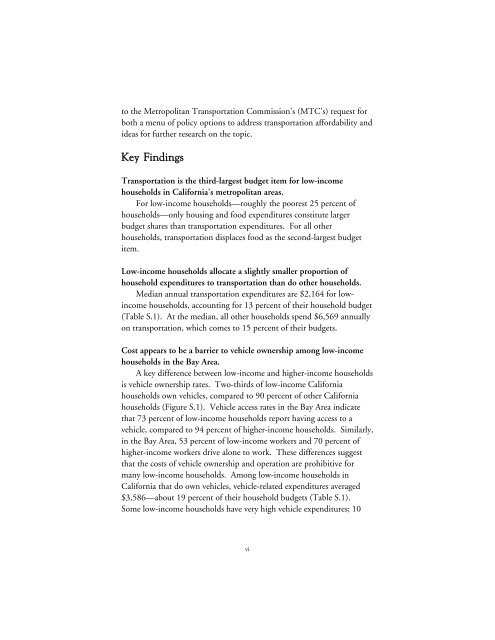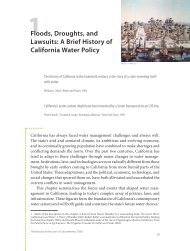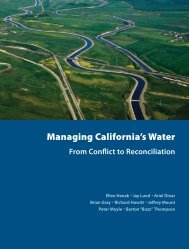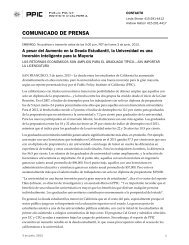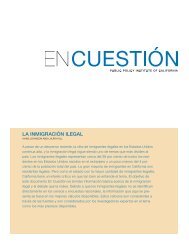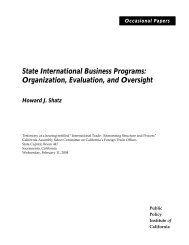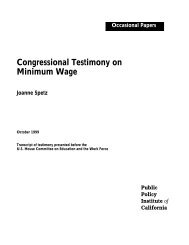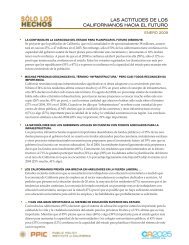Transportation Spending by Low-Income California Households ...
Transportation Spending by Low-Income California Households ...
Transportation Spending by Low-Income California Households ...
Create successful ePaper yourself
Turn your PDF publications into a flip-book with our unique Google optimized e-Paper software.
to the Metropolitan <strong>Transportation</strong> Commission’s (MTC’s) request for<br />
both a menu of policy options to address transportation affordability and<br />
ideas for further research on the topic.<br />
Key Findings<br />
<strong>Transportation</strong> is the third-largest budget item for low-income<br />
households in <strong>California</strong>’s metropolitan areas.<br />
For low-income households—roughly the poorest 25 percent of<br />
households—only housing and food expenditures constitute larger<br />
budget shares than transportation expenditures. For all other<br />
households, transportation displaces food as the second-largest budget<br />
item.<br />
<strong>Low</strong>-income households allocate a slightly smaller proportion of<br />
household expenditures to transportation than do other households.<br />
Median annual transportation expenditures are $2,164 for lowincome<br />
households, accounting for 13 percent of their household budget<br />
(Table S.1). At the median, all other households spend $6,569 annually<br />
on transportation, which comes to 15 percent of their budgets.<br />
Cost appears to be a barrier to vehicle ownership among low-income<br />
households in the Bay Area.<br />
A key difference between low-income and higher-income households<br />
is vehicle ownership rates. Two-thirds of low-income <strong>California</strong><br />
households own vehicles, compared to 90 percent of other <strong>California</strong><br />
households (Figure S.1). Vehicle access rates in the Bay Area indicate<br />
that 73 percent of low-income households report having access to a<br />
vehicle, compared to 94 percent of higher-income households. Similarly,<br />
in the Bay Area, 53 percent of low-income workers and 70 percent of<br />
higher-income workers drive alone to work. These differences suggest<br />
that the costs of vehicle ownership and operation are prohibitive for<br />
many low-income households. Among low-income households in<br />
<strong>California</strong> that do own vehicles, vehicle-related expenditures averaged<br />
$3,586—about 19 percent of their household budgets (Table S.1).<br />
Some low-income households have very high vehicle expenditures; 10<br />
vi


